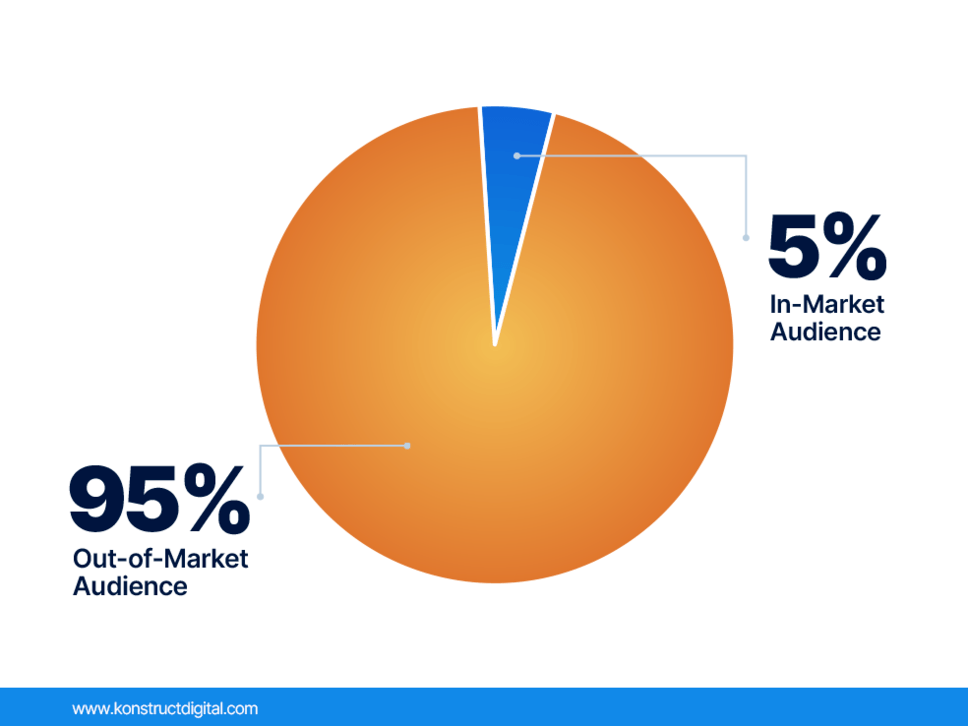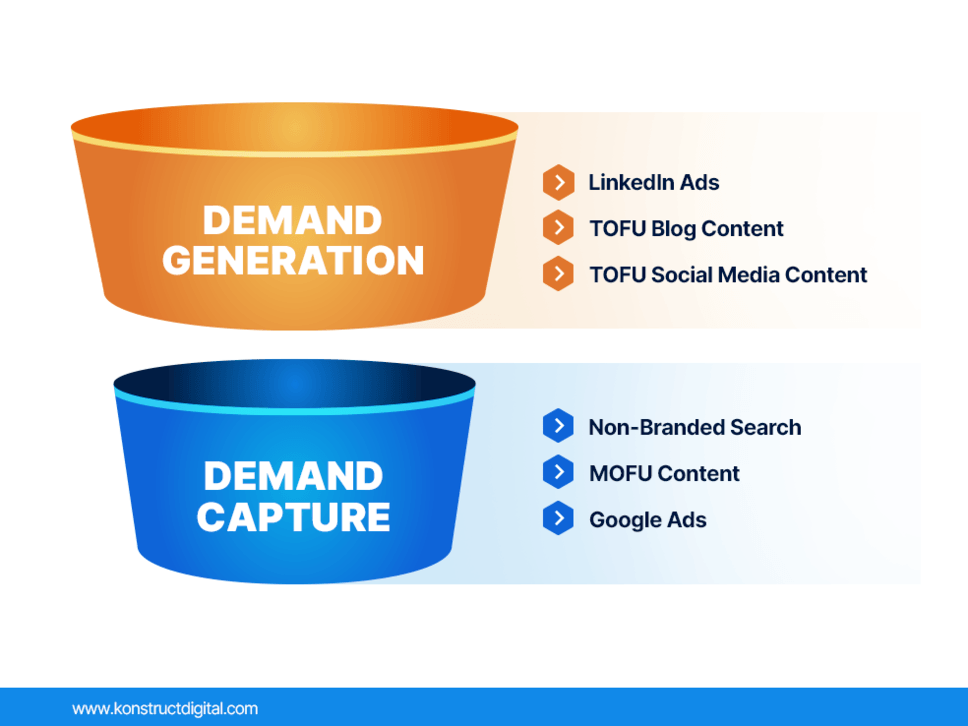“No matter how great the talent or efforts, some things just take time. You can’t produce a baby in one month by getting nine women pregnant.”
This is one of my favourite Warren Buffet quotes, and I think it is equally applicable to GTM strategies as it is to investing.
All marketing works in varying degrees, so the key to assembling a successful B2B go-to-market (GTM) strategy is deciding how to order and prioritize marketing tactics to maximize your ROI and build your pipeline.
But how do you decide where to focus your efforts for maximum impact?
Keep reading to learn our go-to “go-to-market” playbook.
Breaking Down Your Market Audiences
One of the challenges we find new clients encounter when trying to put together the GTM strategy is determining which tactics to prioritize.
In an ideal world, we’d have unlimited budgets to deploy every marketing tactic simultaneously. However, reality often dictates a more measured approach, necessitating a strategic selection of tactics to achieve the best results.
Our methodology at Konstruct Digital hinges on a simple yet effective division of your target market into two primary groups: in-market and out-of-market.
- In-market audiences have an acute problem and are actively seeking solutions, ready to be on the phone with you today. They represent a critical opportunity for immediate engagement through demand-capture tactics.
- Out-of-market audiences are everybody else. This group fits your firmographic targeting and ICP but is not currently engaged in the buying process. Engaging this group requires demand-generation strategies designed to cultivate awareness and preference over time.
As a general rule of thumb, your in-market audience tends to be about 5%, and your out-of-market audience is 95%.

Demand Capture Vs. Demand Generation
Depending on whether we are targeting members of your in-market audience or out-of-market audience, there are various tactics we can pursue, which can be grouped into two “umbrella” groups: demand capture and demand generation.
- Demand capture is using marketing tactics such as search marketing and middle-of-funnel content to target and “capture” your in-market audience.
- Demand generation is figuring out how to build your brand awareness with your out-of-market audience using tactics like display advertising and top-of-funnel content.

Start with Demand Capture Tactics
We recommend starting with demand capture tactics to initially fill your pipeline because your in-market audience is most reachable. Plus, it’s cheaper to reach that audience through SEO, Google Ads, or content marketing.
Since this audience is already looking for a phone number to pick up and call, you definitely want to talk to that audience first.
However, this strategy comes with one primary challenge…this audience has likely also scheduled a meeting with your competitor and is comparing your brands side-by-side.
So, your sales team has much more of an uphill battle as they must spend more time proving why your audience should choose your company.
They’re basically getting a cold prospect that’s coming in and saying, “Hey, tell me why you’re better than X, Y, and Z.”
Then, Focus on Demand Generation Tactics
Demand generation tends to include tactics such as LinkedIn advertisements, top-of-funnel content marketing, and top-of-funnel social media marketing.
Typically, these tactics are more expensive than demand capture techniques because you are engaging an audience that is unengaged.
For example, people on LinkedIn do not want to leave the platform. They aren’t on LinkedIn for clicking on ads. They’re on LinkedIn because they want to elevate their career and see what industry professionals are talking about, right?
So this audience won’t likely see your ad and pick up the phone and call you right then and there.
The beauty of demand generation is that six months down the road when this audience becomes engaged because their problem becomes so acute that they want to take action, your brand will be the first that comes to their brain.
They’ll likely contact you without looking at your competitors first.
Additionally, they are going to be much more aware of your brand, your credibility, and all of the different nuances that you would like to present to them by the time they contact you.
So you are dealing with a much hotter lead than you would otherwise.
The Konstruct Digital Verdict
When we look at demand capture and demand generation, it’s obvious to prioritize demand capture, targeting your in-market audience first. It’s cheaper, faster, and lets you get results sooner.
Once you feel like you’ve got a significant amount of the demand captured, then move to the demand gen side of things. Obviously, if your product is unique to the market and you don’t have any demand yet, you have to focus on demand generation first.
But, as a general rule of thumb, start with demand capture as it focuses on in-market audiences, then move to demand generation as it focuses on out-of-market audiences.
This is a very generalized GTM marketing strategy that is useful in most situations.
If you need help with your GTM strategy, contact us or get a proposal. We’ll help you create a successful GTM strategy and execute the strategy so it aligns with your overall marketing goals.
Need help with B2B Digital Marketing?
Learn more about Konstruct's B2B Digital Marketing Services
More B2B Digital Marketing Resources
- Konstruct Ranks on Top Growing Companies List for 2nd Year in a Row
- Who Wants a Bigger Slice? Understanding B2B Demand Capture Marketing
- Living Konstruct’s Culture: A Glimpse Into Our World
- Account-Based Marketing: Just Another Buzz Word or The Synergy That Drives Business Success?
- My Massive Marketing Mistake: The Hidden Cost of Cutting Costs
- When Will I Start Seeing Results From My Marketing Investment?
- Konstruct Ranks on The Globe and Mail’s Top Growing Companies List
- How to Fail at B2B Inbound Marketing (i.e., Common Misconceptions & Mistakes to Avoid)
- B2B Marketing Funnels: The Secret to More Qualified Leads
- 19 B2B Lead Generation Tools to Turbocharge Your Sales


